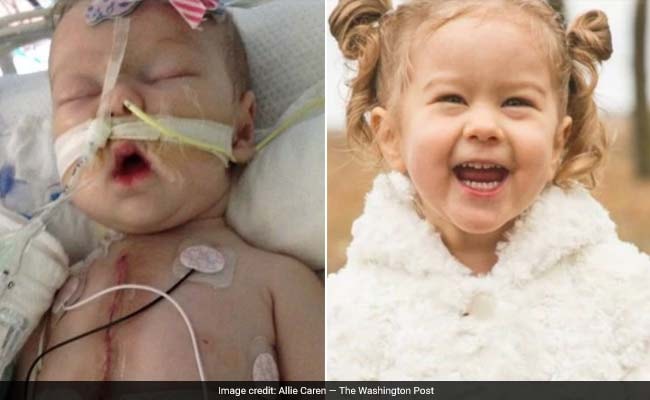
When Sadie Rutenberg was born, she had a gaping hole between the two sides of her heart, and her heart valves were malformed and leaking.
In her first few months of life, she had already undergone two open-heart surgeries; but the damage was too extensive to repair, and the blond-haired, blue-eyed infant was failing to thrive. Her parents said there was no choice - they would have to take a risk, or their child might not survive.
So, the Seattle couple made what they said was the only logical decision: Their 6-month-old daughter would receive the world's tiniest mechanical heart valve.
At the time, in 2015, Abbott's Masters HP 15-mm rotatable mechanical heart valve had not yet been fully approved by the U.S. Food and Drug Administration. Sadie would become the first child in the United States to try it.
"It was the only option we had," her father, Lee'or Rutenberg, told The Washington Post on Tuesday. "It was either get this valve or go to palliative care and try to make her comfortable."
Sadie's parents say that getting the heart valve was the only option that they had
That May, Sadie was wheeled into an operating room at Seattle Children's Hospital for her third procedure.
This time, surgeons implanted one of the dime-sized mechanical heart valves as part of a clinical trial. (A pacemaker would soon follow.)
Following the groundbreaking procedure, Sadie's mother, Wendy, saw the surgeon approaching and anxiously searched his eyes - "that initial moment where we're looking at him and wondering, 'Is he going to give us good news or bad news?' " she would say later.
"Then he broke into a smile," she recounted in a news release from Abbott, which manufactures the valve. "It was like winning the lottery."
The surgeon told the Rutenbergs that the valve had worked and that their daughter's heart function had already improved - "a moment I'll never forget," as Lee'or Rutenberg described it.
Sadie is now like other children her age - "active" and "energetic" and "vibrant," her father says, but with a little something extra that Sadie calls "a sparkle" in her heart.
"She's a firecracker," Rutenberg said. "She has no idea what she's been through."
Sadie was born with a complete atrioventricular canal defect, a congenital condition characterized by a large hole in the wall between the heart's upper chambers, plus problems with the valves that regulate blood flow, according to the Mayo Clinic.
As blood leaks into the ventricles, it forces the heart to work harder than it should; when not promptly and properly treated, the condition can lead to heart failure, according to the Mayo Clinic.
Tests had shown that Sadie was going to have heart problems, but her parents said they did not know the issues would be so severe.
In the first few months of life, Sadie had already started laboring to breathe, and although she was eating all the time, she was not gaining weight, her father said.
Seattle Children's Hospital said in 2015 that at 2 months old, Sadie weighed several pounds less than the average infant that age.
"Something just wasn't right," her father said.
Rutenberg said his daughter underwent her first open-heart surgery to repair the hole in the wall between the chambers of the heart.
While doctors were operating, he said, they discovered the problem with her heart value. Surgeons tried to repair it, he said, but were unsuccessful.
Weeks later, they tried again.
And again, their efforts failed.
Jonathan Chen, chief of pediatric cardiovascular surgery at Seattle Children's Hospital, spoke to Sadie's parents about a pediatric mechanical heart valve that was being tested and asked whether they wanted Sadie to take part in a clinical trial, according to a 2015 news release from the hospital.
The valve was made especially for newborns, infants and toddlers - meaning surgeons would no longer have to resort to using valves too large for their tiniest patients, according to St. Jude Medical, a manufacturer that was later acquired by Abbott.
"We're looking down the road, at Sadie's future, and we're scared," Rutenberg said in 2015. "But after a few minutes of digesting, we were ready to talk next steps. We said, 'What's the game plan?' "
One Thursday that May, Sadie became the first person in the United States to receive one of the tiny heart valves, according to Seattle Children's Hospital.
"She still has a long road ahead," Chen said in 2015, noting that Sadie would need additional surgeries to replace the valve as she grew. "But there's no reason to think she won't be running and playing and acting like a normal kid."
Track Latest News Live on NDTV.com and get news updates from India and around the world

